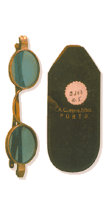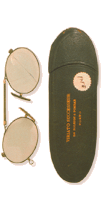


The invention of lenses
The identity of who might have manufactured the first lenses is lost in time. There are references about Roger Bacon (1268) for having found the function of convex lenses: "If anyone examines letters or small objects through the medium of a crystal or glass if it be shaped like the lesser segment of a sphere, with all the convex side toward the eye, he will see the letters far better and larger…such an instrument is useful to all persons". In 1305 in a Florentine Church father Giordano di Rivalto, from Pizza, stated during a sermon to have met 20 years before the person who would have manufactured the first lenses. It is so possible that in the Western Countries the invention of lenses goes around 1287. However, in 1285 Henry Goethals, a friend of Bacon, said to have met in Rome a monk named Spina, lens manufacturer, who freely taught his craft to others. The craft of manufacturing lenses had been practiced before, although with the concern of not revealing the principles. It is possible that the first lenses where produced by an Italian glass manufacturer, maybe in Murano (Venice). The diversity of lenses from those first times leads us to think that the invention may have occurred in different places. Some people claim that it may have appeared in China before it appeared in western countries. The first pictures of convex lenses are from the 15th century. The concave lenses were only introduced later, in the late 17th century, for the correction of myopia and in the 19th century appeared the cylindrical lenses for astigmatism. The contact lenses became popular in the 2nd half of the 20th century.
Among the souvenirs of the student life in the Medical School of Porto present in this museum a special attention is laid on the spectacles of Camilo Castelo Branco (1825-1890).


